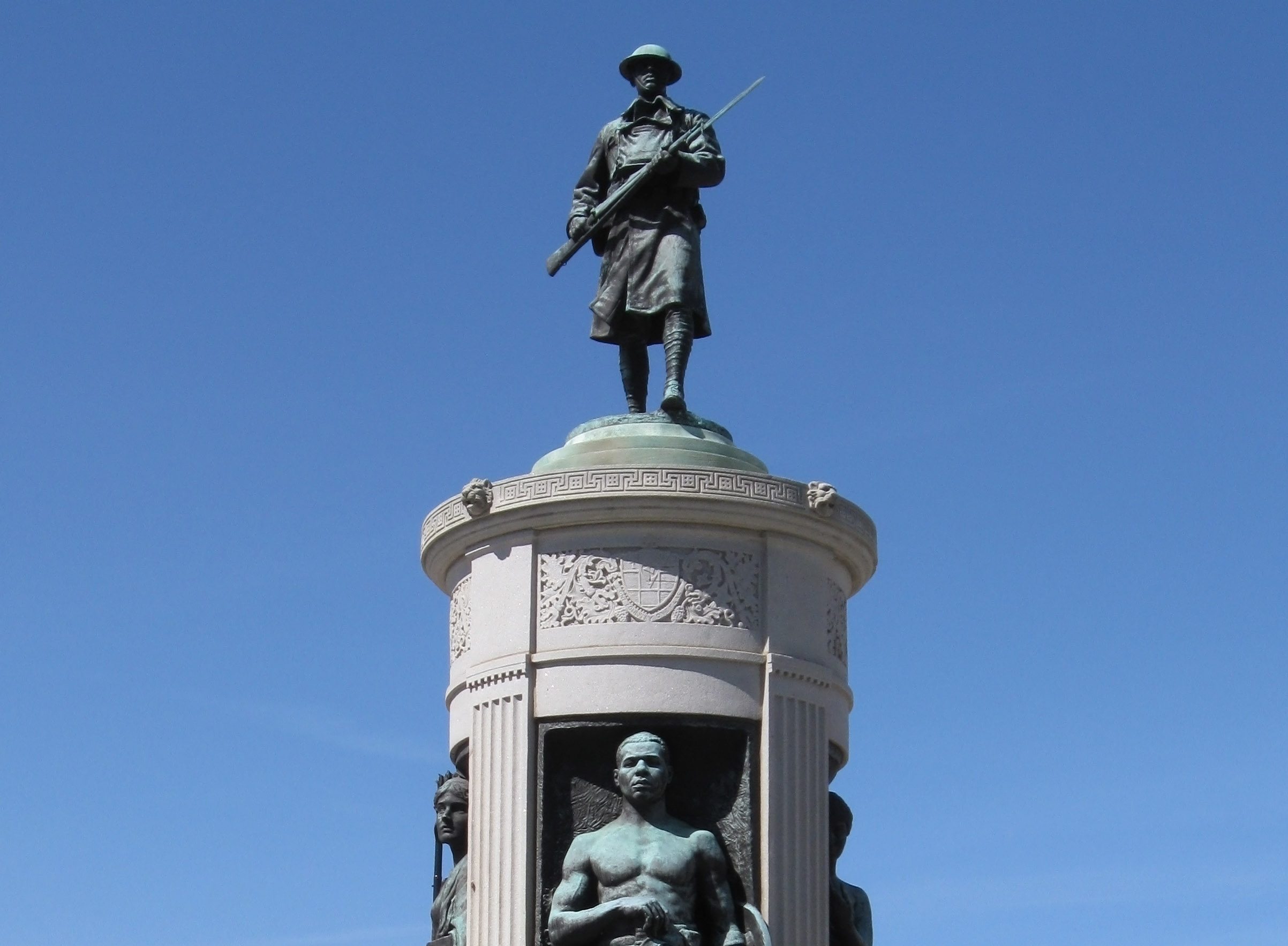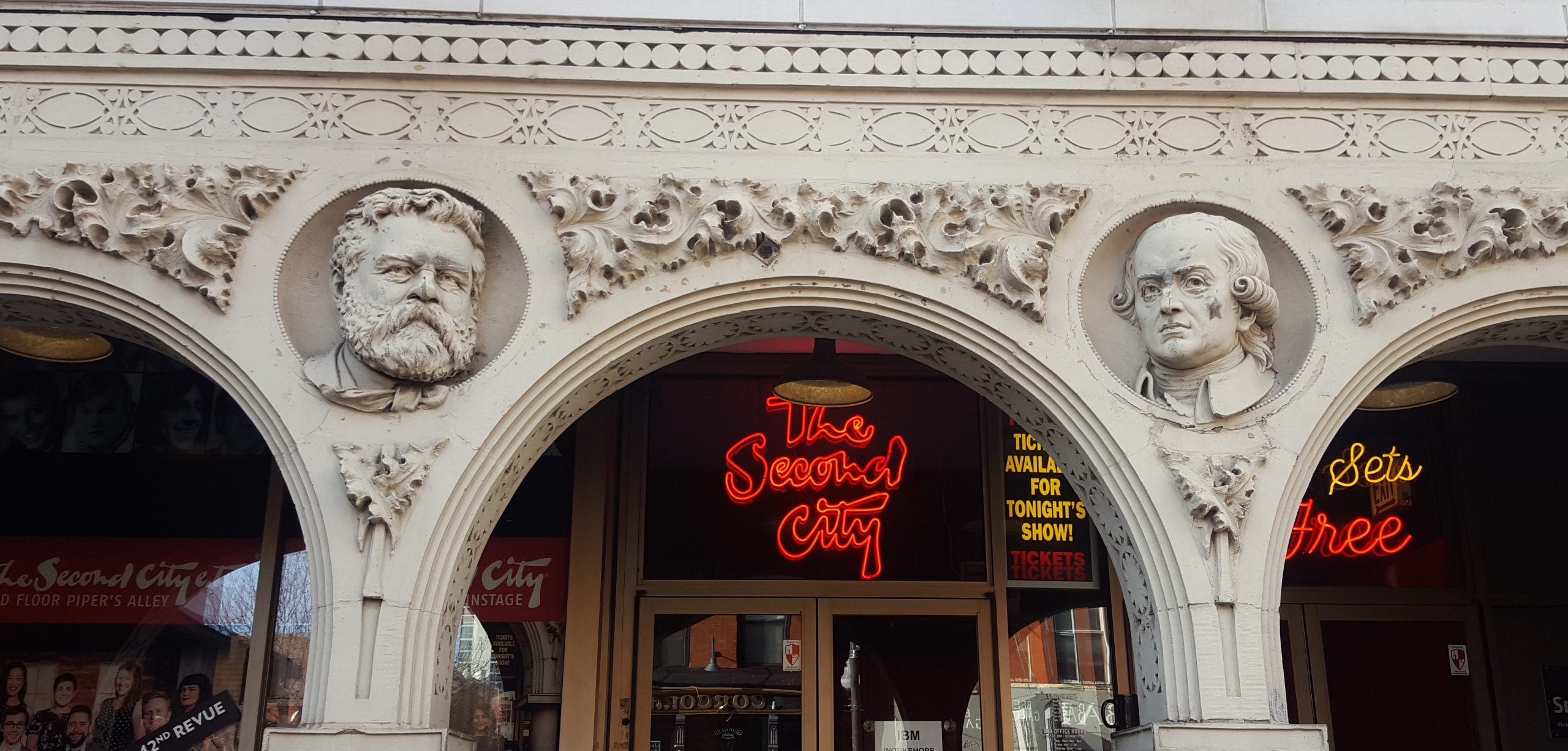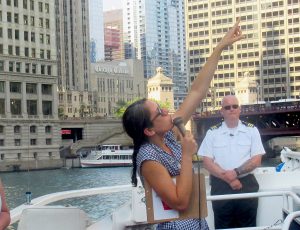Jackson Park is currently the focal point of a contentious civic debate. The Obama Presidential Center and a new Tiger Woods-branded golf course are about to remake the historic park. Preservationists, most notably Preservation Chicago, and neighborhood community groups have been pushing back against these plans. I attended Preservation Chicago’s announcement of its annual endangered buildings list last week. Their case for saving the park and its historic legacy was compelling, but I’m not sure it’s achievable. The future of this historic park is very much up for debate, so I wanted to look at both sides.
We research stories from Chicago history, architecture and culture like this while developing our live virtual tours, in-person private tours, and custom content for corporate events. You can join us to experience Chicago’s stories in-person or online. We can also create custom tours and original content about this Chicago topic and countless others.
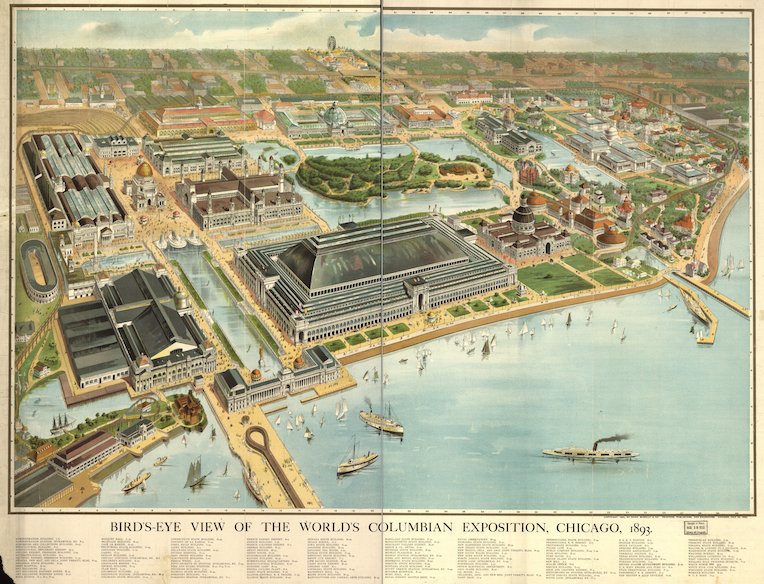
The History of Jackson Park
Before getting to the debate, it’s worth knowing some of Jackson Park’s history. The state legislature set aside the parkland, which also included the Midway Plaisance and Washington Park, way back in 1869. Despite an early design by Frederick Law Olmstead, the park sat empty and undeveloped until Congress awarded the 1893 World’s Fair to Chicago. The lack of development wound up being a boon when the fair’s directors chose the park as the host site.
Daniel Burnham and Olmstead oversaw the furious flurry of planning and construction to create the famed White City. They relied upon Olmstead’s original plan for a water-centric layout for the grounds. Those lagoons and canals snaked around the massive, pearly-white Beaux Arts structures that still capture the imagination 125 years later. The Columbian Exposition, alas, was not built to last. Most of the buildings burned down within months of the fair’s closing. Jackson Park was then remodeled to match Olmstead’s original design. Highlights like the Museum of Science and Industry, the replica of 1893’s Republic statue, and the first public golf course west of the Alleghenies have made it into the jewel of the South Side. I always love showing the vast parklands off to visitors on our Chicago Neighborhoods tours for private groups.
The Obama Presidential Center and Redevelopment
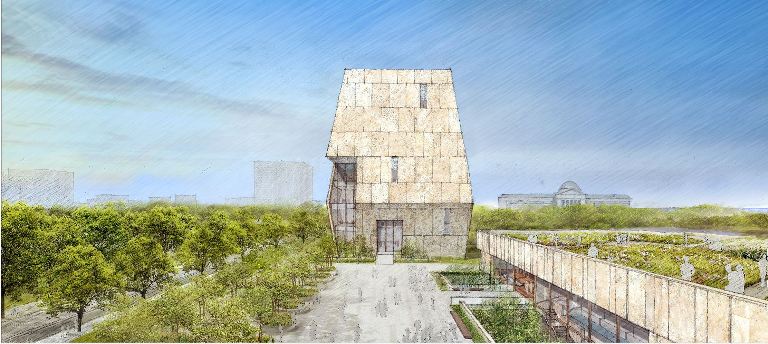
In 2016, President Obama selected Jackson Park as the location of his Presidential Center. In choosing Jackson Park he is bringing a museum and community space dedicated to his administration and legacy back to the community where his political career began. Unsurprisingly, some community and preservation groups announced opposition or criticism almost immediately. Friends of the Park, fresh off their success in blocking the proposed Lucas Museum near McCormick Place, opposed the use of parkland for the center.
Community groups in Woodlawn and South Shore also voiced opposition to parts of the proposal. Part of the opposition comes from the proposed closing of Cornell Drive. The street, which winds through the western side of Jackson Park, provides a nice shortcut from Stony Island to Lake Shore Drive. Locals, understandably, foresee a long future of traffic jams. The Obama Foundation has also resisted signing a community benefits agreement. This would guarantee benefits and housing for low-income residents of the nearby neighborhoods. Obama has said it would lead to contention among community groups. Maybe so, but it’s also leaving the most vulnerable members of the area in the lurch. The Presidential Center will likely lead to gentrification and low-income African-Americans may be pushed out without a binding agreement.
Preserving Jackson Park
This past week Preservation Chicago named Jackson Park to its annual list of endangered historic buildings and sites. I attended their presentation and can vouch for its persuasiveness. Ward Miller, the Executive Director of Preservation Chicago, of course described Olmstead’s historic design and the World’s Fair legacy at Jackson Park. What stood out to me were the little-known aspects of the park’s history. Some small structures, like pavilions and bridges, are still standing from the Columbian Exposition. Additionally, the foundations of the White City’s buildings lie below the meadows and trees. Surprisingly, Jackson Park is an archeological gold mine.
Miller also took a moment to focus upon the potential impact of the proposed golf course in Jackson Park. Designed by Tiger Woods’ firm, the PGA-level course would replace the extant courses in the Park and at the adjacent South Shore Cultural Center. It threatens to gentrify the historic public course, which dates back to the 1890s. Perhaps most distressingly, the new course could adversely impact the South Shore Nature Sanctuary.
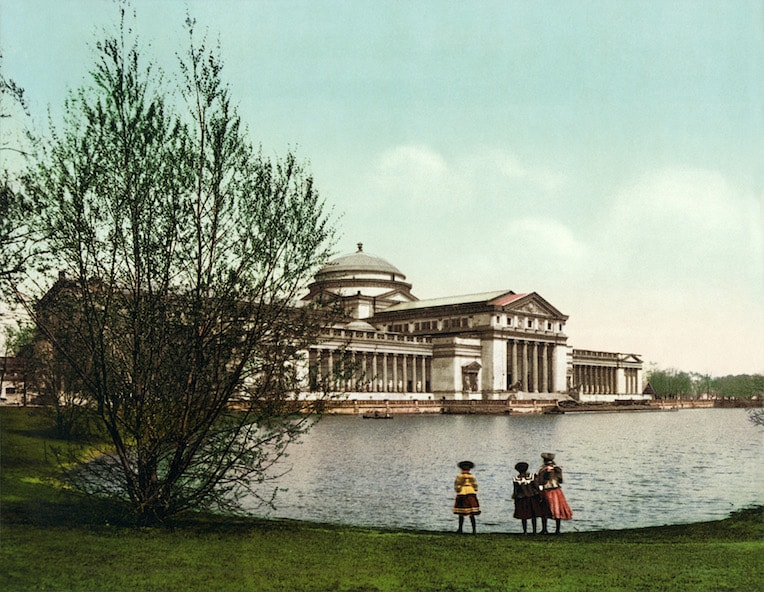
What to Do?
The plans for the Obama Center and the new golf course will not change much. Despite the criticism and opposition, powerful players back both plans, including the movers and shakers in City Hall and Springfield. Community opposition has rarely stopped determined politicos in Chicago’s history.
So the question for us is to ask what a project like this means for historic preservation in Chicago. Our city’s historic legacy has been demolished or tarnished too many times. I constantly daydream about what Chicago would be like if we still had the White City, the mansions of Prairie Avenue, the Home Insurance Building, the 1933 Century of Progress buildings, the Masonic Temple building, Louis Sullivan’s Stock Exchange and Garrick Theater, and the Beaux Arts Federal building. Those lost structures and spaces are a huge part of our historical legacy. We lost them through neglect or sacrificed them to “progress” and can never recover them. It would be a damn shame to see the historic nature of Jackson Park similarly disappear.
However, I have to acknowledge that we’re a massive and lively city. To hold onto every patch of historic ground would mean there’d quickly be none left. So we have to make compromises and pick our battles. At the end of the day, I don’t think it’s possible to keep Jackson Park exactly as it is. History does need to roll forward. But the battle for historic preservation and community engagement is a good fight. It’s worth the time and concern, even if the war is unwinnable, because it can preserve some of what makes our city special.
-Alex Bean, Content Manager and Tour Guide
ABOUT CHICAGO DETOURS
Chicago Detours is a boutique tour company passionate about connecting people to places and each other through the power of storytelling. We bring curious people to explore, learn and interact with Chicago’s history, architecture and culture through in-person private group tours, content production, and virtual tours.




